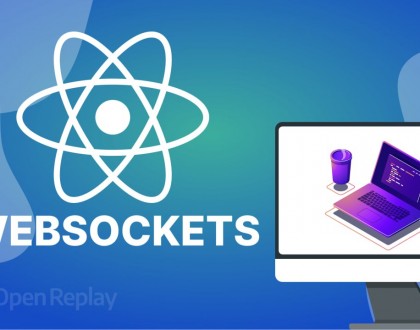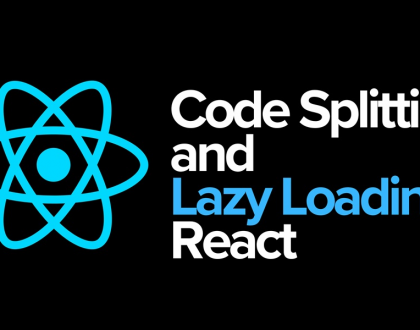Why React is Still the Best Front-End Library for Modern Web Development

Introduction
In the ever-evolving landscape of web development, selecting the right tools is crucial for building fast, maintainable, and scalable applications. Among the various front-end frameworks and libraries, React has maintained its position as one of the most popular and widely adopted technologies. Despite the rise of new contenders, React continues to be the go-to choice for developers around the world. But what makes React stand out, and why is it still considered the best front-end library for modern web development?
1. Component-Based Architecture
One of React’s most compelling features is its component-based architecture, which promotes reusable, modular code. In React, the UI is broken down into small, independent components that can be easily reused across the application. Each component encapsulates its own logic, rendering, and state management, making it easier to maintain, update, and scale large applications.
This modular approach reduces duplication of code and allows developers to create complex user interfaces by simply composing components together. Whether you’re working on a small personal project or a massive enterprise-level application, this architecture simplifies the development process and leads to cleaner, more maintainable code.
2. Virtual DOM for Enhanced Performance
React utilizes a virtual DOM, a lightweight representation of the actual DOM, to optimize rendering performance. Whenever there’s a change in the application’s state, React updates the virtual DOM first, calculates the difference between the previous and current versions (also known as “reconciliation”), and then applies the minimal set of changes to the actual DOM.
This process results in a significant performance boost compared to directly manipulating the DOM, especially in large applications with complex UI. React’s efficient updating mechanism ensures a smooth and responsive user experience, even when dealing with frequent UI changes.
3. Strong Ecosystem and Community Support
React’s vast ecosystem is one of its major strengths. Since its release, React has attracted a thriving community of developers and contributors, resulting in an enormous collection of third-party libraries, tools, and tutorials. Whether it’s state management with Redux or MobX, routing with React Router, or styling with Styled-Components, the React ecosystem provides solutions for virtually every aspect of front-end development.
Furthermore, React is backed by Facebook (Meta), ensuring continuous updates, bug fixes, and improvements. This corporate backing also means that React has been tested in high-scale applications, demonstrating its robustness and reliability for real-world production environments.
4. Declarative Syntax for Better Readability
React’s declarative syntax makes it easy to describe how the UI should look at any given point in time. Developers write code that specifies what the interface should render based on the state, and React takes care of the rendering logic. This contrasts with imperative code, where developers explicitly tell the app how to change the DOM.
By focusing on the “what” instead of the “how,” React simplifies the codebase, making it more readable and easier to understand. For instance, when building a button component, you simply declare its appearance and behavior based on the component’s state. React’s declarative nature reduces the complexity of managing UI states and makes the code much more maintainable in the long run.
5. React’s Rich Tooling and Developer Experience
React offers an impressive set of development tools that make building applications faster and more enjoyable. Tools like React Developer Tools help developers inspect and debug the component tree, state, and props in real time, while Create React App simplifies the initial setup of a React project by providing a boilerplate with a predefined configuration.
Moreover, React integrates seamlessly with TypeScript, a statically typed language that enhances the developer experience by catching errors early and improving code quality. Whether you’re using modern JavaScript or TypeScript, React’s tooling ensures that you can build apps efficiently without having to worry about cumbersome setups or configurations.
6. One-Way Data Flow and Predictable State Management
React’s one-way data flow makes it easier to understand how data moves through the application. Data flows down from parent components to child components via props, and any changes to the state of a component trigger a re-render of that component. This predictable flow of data allows developers to easily trace and debug how the application behaves.
For more complex state management, React offers several solutions, from the built-in Context API for managing global state to third-party libraries like Redux for large-scale state management. This flexibility allows developers to choose the right tool for their specific use case, ensuring that React can scale from simple apps to enterprise-level systems.
7. React Native for Mobile Development
Another significant advantage of React is the ability to use React Native for mobile app development. React Native allows developers to build cross-platform mobile apps for both iOS and Android using the same React codebase. This unification of web and mobile development under the same ecosystem saves time, reduces the learning curve, and promotes code reusability across different platforms.
With React Native, you can leverage your existing knowledge of React to build native mobile apps, making it a powerful option for teams working on both web and mobile projects simultaneously.
8. SEO-Friendly with Server-Side Rendering (SSR) and Next.js
One common criticism of single-page applications (SPAs) built with React is that they can be SEO-unfriendly due to their reliance on client-side rendering. However, with server-side rendering (SSR) and frameworks like Next.js, React applications can be pre-rendered on the server, making them SEO-friendly and ensuring faster initial page loads.
Next.js has become the go-to framework for building React applications with SSR, static site generation (SSG), and more. By combining React with Next.js, developers can create SEO-optimized web applications with server-side rendering and other advanced features like API routes, image optimization, and automatic code splitting.
9. Wide Adoption and Job Opportunities
As of today, React is one of the most in-demand front-end frameworks in the industry. Many companies, from startups to tech giants like Facebook, Instagram, Netflix, and Airbnb, use React to power their user interfaces. As a result, React developers are highly sought after, making it an excellent technology to learn for those looking to advance their careers in web development.
The widespread adoption of React ensures that developers have access to a wealth of resources, job opportunities, and a global community of like-minded professionals to collaborate with.
Conclusion: React’s Staying Power
React has proven itself as a reliable, flexible, and scalable front-end library for building modern web applications. Its component-based architecture, efficient rendering with the virtual DOM, vast ecosystem, and strong community support are just a few of the reasons why React remains the top choice for developers worldwide.
With ongoing improvements, integration with mobile development (React Native), SEO optimization through SSR, and a focus on developer experience, React continues to be at the forefront of front-end web development. As the web evolves, React’s ability to adapt and innovate ensures its place as the best front-end library for modern web development.
If you’re considering starting a new project or looking to improve your web development skills, React is undoubtedly the right choice for building high-quality, high-performance applications.




